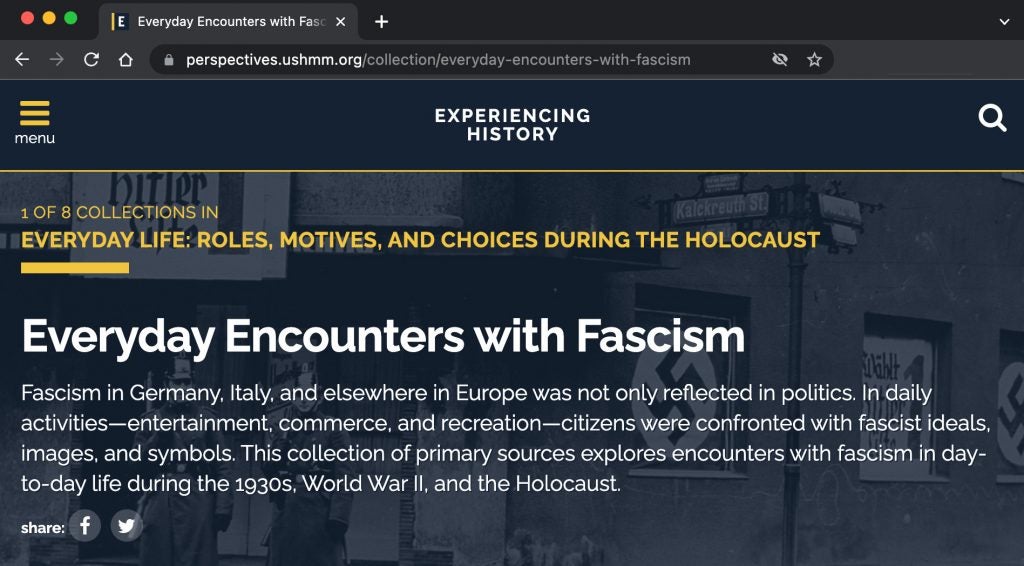
Fascism in Germany, Italy, and elsewhere in Europe was not only reflected in politics. In daily activities—entertainment, commerce, and recreation—citizens were confronted with fascist ideals, images, and symbols. This collection of primary sources explores encounters with fascism in day-to-day life during the 1930s, World War II, and the Holocaust.
This report is part of the Collaborative Research in the Holocaust HistoryLab.
Author
Keanu Heydari, Lediona Shahollari, Marina Mayorski, Michael Martin, and Paige Newhouse
Department or Unit
History
Publish Date
2019
Format
Lab
Website
Support Partners
United States Holocaust Memorial Museum
